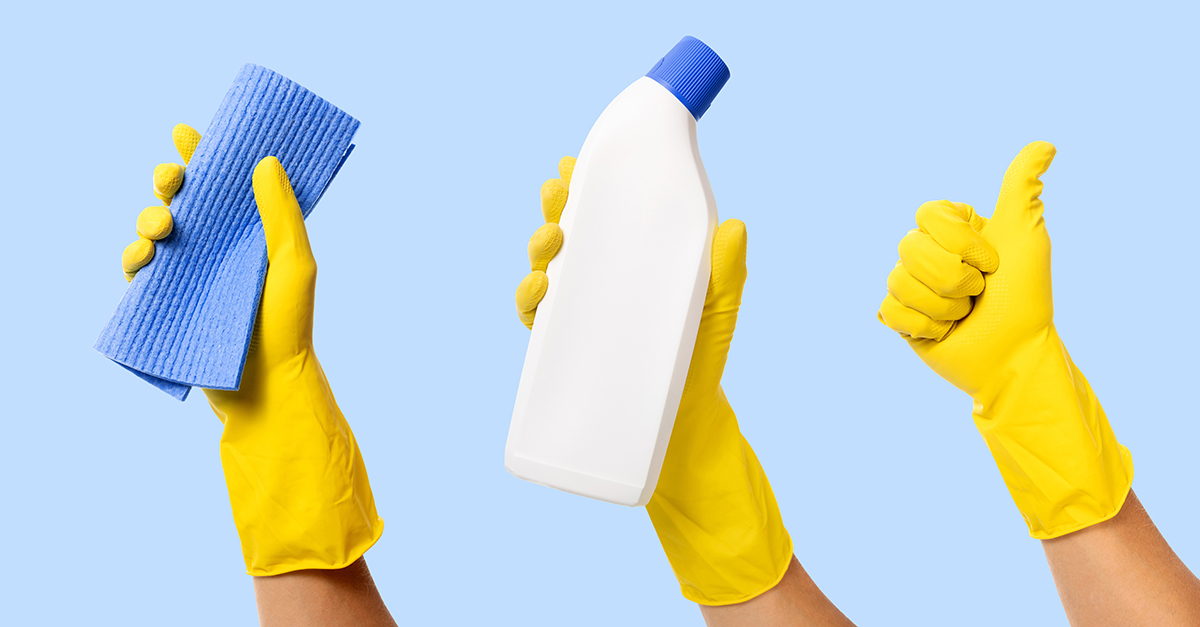One of the many reasons managers provide education and training to their cleaning staff is to help prevent cross contamination within a facility. Cross contamination is the spread or transfer of germs from one area, surface, or person to another. With the right training and protocols in place, cleaning staff are more likely to use the techniques, tools, and products—and follow behavioral habits—that prevent cross contamination.
Three techniques for success
Train your employees to adhere to the following three-step pattern when cleaning each area. By implementing these three simple techniques, they will remove germs instead of inadvertently moving them to another surface.
- Clean the room or space from the top first, working down to the bottom. This will ensure that as dirt, dust, and pathogens fall during the cleaning process, your staff will remove these soils as they clean lower areas. Start with ceiling fans, vents, and lights, and then end with the floors.
- Start with the cleanest areas and move toward the dirtiest areas to avoid spreading germs to clean spaces. This is particularly important when cleaning with reusable cloths that are not often replaced.
- Wipe in an s-shaped pattern so as not to overlap with a cleaned area.
Wipe away germs
The correct use of tools and products, such as microfiber cloths, to prevent cross contamination also takes a three-prong approach:
- Use a different colored microfiber cloth in each facility area. For example, use red cloths only in restrooms. This will prevent staff from accidentally grabbing a used red cloth to wipe down a table in a break room. Color-coded cloths will keep restroom germs in restrooms and break room germs in break rooms, even after laundering the cloths.
- Fold reusable cloths strategically to avoid cross contamination. Before use, fold cloths until they are about the size of a hand. After wiping down a surface, refold the cloth exposing a clean side for the next surface. Folding reusable cloths multiple times can typically create eight different clean surfaces out of a single cloth.
- Forgo reusable cloths altogether in favor of ready-to-use disinfecting wipes that can be discarded after each use. It is still a good idea to use only one side of the wipe per surface, but in general, the same product can be used in any area of a facility.
Everyone plays a role
Encourage facility-wide behaviors that prevent the spread of germs. Facility occupants or visitors can help reduce a building’s bioburden and support cleaning crews by using cleaning and disinfecting products on shared or commonly touched surfaces and individual workstations throughout the day. Place easy-to use products, such as disinfecting wipes, in locations with shared surfaces, such as break rooms and conference rooms. Post signs in restrooms to encourage everyone to wash their hands, and make sure to keep soap dispensers filled.
Remind everyone to read disinfectant product labels for important information, such as directions for use, a list of the pathogens the product is effective against, and the recommended contact time (the time the product needs to remain wet on a surface to effectively kills germs).




